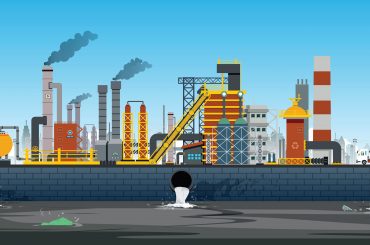Today, retaining employees is a complex issue for the construction industry. Companies must do more than pay competitive wages, keep employees safe, and provide them with consistent hours in order for them to make a living. Construction Industry firms are dedicated to maintaining the health and happiness of their employees, and we demonstrate this dedication via a variety of employee retention initiatives.
Despite being one of the most important sources of employment in many countries, the construction industry is also one of the most dangerous. According to statistics, over 400 injuries and over 20 fatalities are caused by construction each year in Ontario alone. As an employer, you should ensure that your construction site provides the highest level of safety and security to its employees. Construction workers are exposed to a variety of dangers that can result in injury or death. Falls from heights, machinery breakdowns, electrocution, falling objects, and building collapses are just a few of the dangers that construction workers face.
1. Prioritize Your Tasks
The organisation established the three “everyday pillars” that we live by as a firm. Of course, the most critical factor is safety, which is followed by quality and efficiency. So, when we have our morning safety briefings, we make sure to discuss everything connected to our pillars and how they affect the work we’re supposed to do. In addition, it provides continuing training events for all of our staff to reinforce our pillars.
2. Emphasize On Training
Skill is dwindling in our industry. You can no longer rely on trade schools to provide qualified employees for your organisation. For example, our company recently built and launched an in-house training institute. It not only assists us in better preparing our personnel to be as productive as possible, but it also provides us with a competitive advantage over other construction firms.
3. Maintain The Condition Of The Equipment
We take great pride in keeping our fleet of machinery clean, safe, and in good working order. People frequently tell us that they wish to work with us because of the high quality of our equipment. It’s not prone to breakdowns and comes equipped with air conditioning, a radio, and other conveniences. But, most essential, the equipment performs as expected.
4. Be Transparent
Employees must understand where we are as a company, where we’re going, and what we’re attempting to accomplish. Everyone benefits from transparency, so if any of our employees are unclear about something, we urge them to speak up and acquire the answers they need to execute their jobs as efficiently and effectively as possible. Our newly established initiative, “Speak Out For Safety,” is one technique to encourage dialogue.
5. Latest Tools And Technologies
Because the construction industry’s skills are dwindling, businesses have begun to rely more on technology to increase productivity and better meet client expectations. Drones are an excellent example of a technology that your firm should become familiar with, mainly because of their capacity to go out and photograph projects that you are bidding on or even for general business development. In addition, GPS (global positioning satellite) technology, 3D, and autonomous equipment all have a lot of promise. As an industry, we’re interested to see what the future holds in terms of technology.
6. Demonstrate Your Concern For Your Staff
Today’s construction companies frequently make the mistake of treating personnel like numbers or interchangeable widgets. So not only does our company aim to engage employees, but we also go out of our way to show them how much they are appreciated. Hosting an annual Christmas party, organising sports events, and many other activities are among the efforts.
7. Providing Sufficient Safety Equipment
The lack of suitable personal protection equipment (PPE), such as helmets and gloves, is responsible for the majority of construction-related injuries. Employees should have masks on top of essential equipment such as helmets, ear muffs, knee pads, and high-visibility jackets if the working environment is dusty.
8. Hire Experts
Workers with sufficient experience should be considered when employing professional labour. For example, engineers and construction managers work with a large number of untrained manual workers, and their mistakes can influence a large group of people. This group of workers should also be registered with proper certification agencies and have evidence of work experience.
9. Recognize Risks And Opportunities
Several years ago, our organisation noticed a developing skills gap in the market and decided to do something about it. We established in-house training programmes and hired personnel to teach new employees how to survey, set benchmarks and elevations, and much more. It eventually became a conventional, repeatable training programme with a consistent message and positive outcomes.
Endnote!!!
Although no construction company can be completely safe, you may improve the safety of your employees by implementing the safety precautions listed above and following industry best practices. In addition, employees should be asked frequently what they think could be done to make their jobs safer and comfortable, and they should be able to report any incidents or near-misses to the company.



